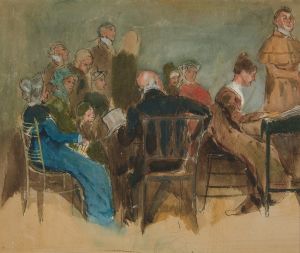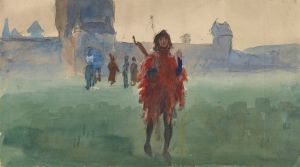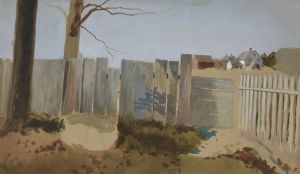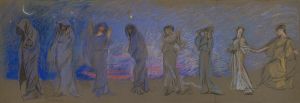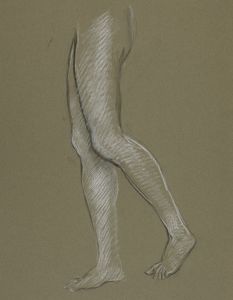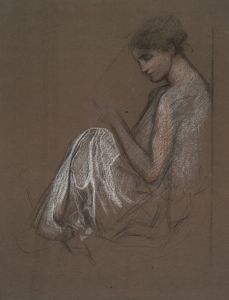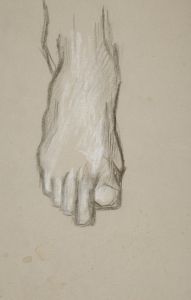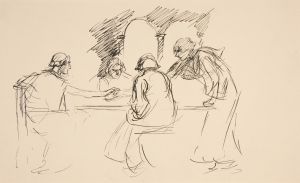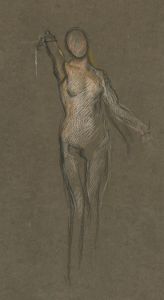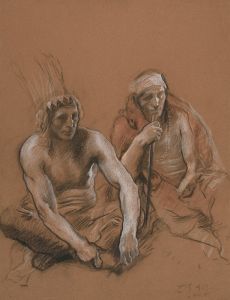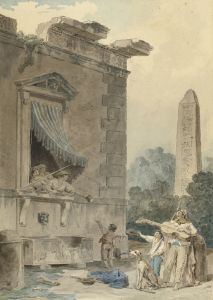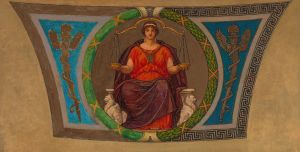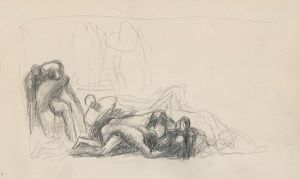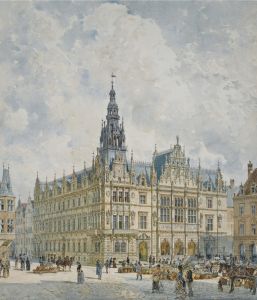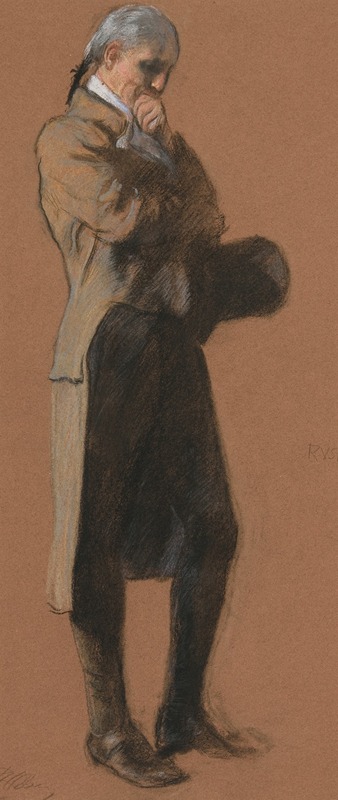
Study for figure of Dr. Benjamin Rush, in ‘Apotheosis of Pennsylvania’ mural at the state capitol building in Harrisburg, Pennsylvania
A hand-painted replica of Edwin Austin Abbey’s masterpiece Study for figure of Dr. Benjamin Rush, in ‘Apotheosis of Pennsylvania’ mural at the state capitol building in Harrisburg, Pennsylvania, meticulously crafted by professional artists to capture the true essence of the original. Each piece is created with museum-quality canvas and rare mineral pigments, carefully painted by experienced artists with delicate brushstrokes and rich, layered colors to perfectly recreate the texture of the original artwork. Unlike machine-printed reproductions, this hand-painted version brings the painting to life, infused with the artist’s emotions and skill in every stroke. Whether for personal collection or home decoration, it instantly elevates the artistic atmosphere of any space.
Edwin Austin Abbey, an American muralist and illustrator, created the "Study for Figure of Dr. Benjamin Rush" as part of his work on the "Apotheosis of Pennsylvania" mural located in the Pennsylvania State Capitol in Harrisburg. Abbey, known for his detailed and historically rich murals, was commissioned to contribute to the decoration of the Pennsylvania State Capitol, a project that included contributions from several prominent artists of the time.
The "Apotheosis of Pennsylvania" mural is a significant piece of art that celebrates the history and achievements of the state of Pennsylvania. It is located in the rotunda of the Capitol building, a space designed to inspire awe and reflect the grandeur of the state's history. Abbey's work on this mural was part of a broader movement during the late 19th and early 20th centuries to incorporate fine art into public buildings, thereby making art accessible to the general public and celebrating national and local history through visual storytelling.
Dr. Benjamin Rush, the subject of Abbey's study, was a prominent figure in American history. He was a Founding Father, a signer of the Declaration of Independence, and a renowned physician. Rush is often referred to as the "Father of American Psychiatry" due to his pioneering work in the field. His contributions to medicine and his role in the founding of the United States make him a fitting subject for inclusion in a mural celebrating Pennsylvania's history.
Abbey's study for the figure of Dr. Benjamin Rush would have been a preparatory work, used to plan the final composition and details of the mural. Such studies are crucial in the mural-making process, allowing the artist to experiment with composition, pose, and expression before executing the final work on a large scale. These studies often provide insight into the artist's process and the evolution of the final piece.
The Pennsylvania State Capitol, completed in 1906, is an architectural and artistic landmark. The building's design and decoration were intended to reflect the state's prosperity and cultural aspirations. Abbey's mural, along with other artworks in the Capitol, contributes to this vision by depicting key figures and events in Pennsylvania's history.
Edwin Austin Abbey's contribution to the Capitol's art collection underscores his reputation as a leading muralist of his time. His ability to blend historical accuracy with artistic expression made his work particularly suited to the grand and educational purpose of public murals. Abbey's depiction of Dr. Benjamin Rush in the "Apotheosis of Pennsylvania" serves not only as a tribute to Rush's legacy but also as a testament to Abbey's skill in capturing the essence of historical figures through art.





